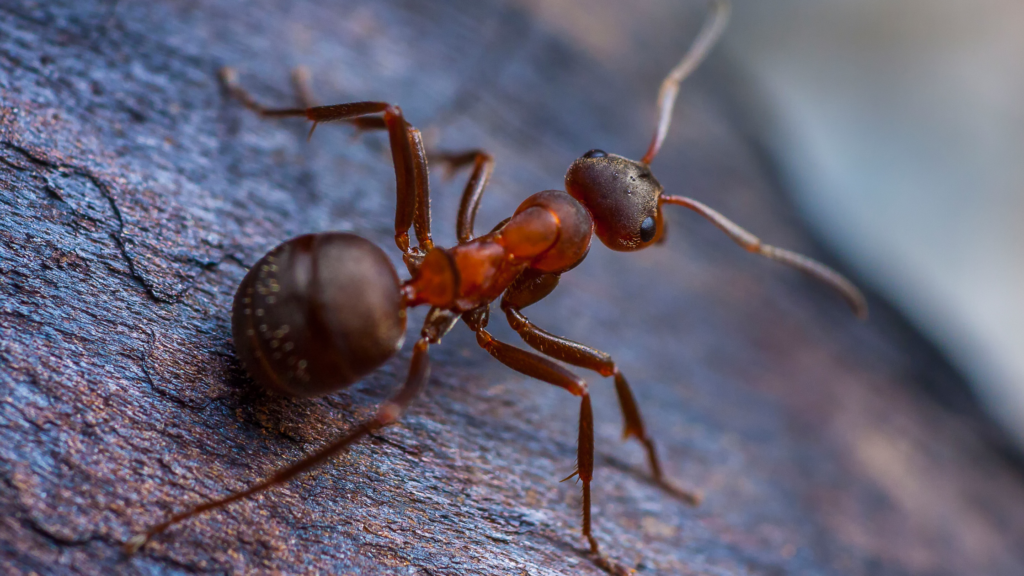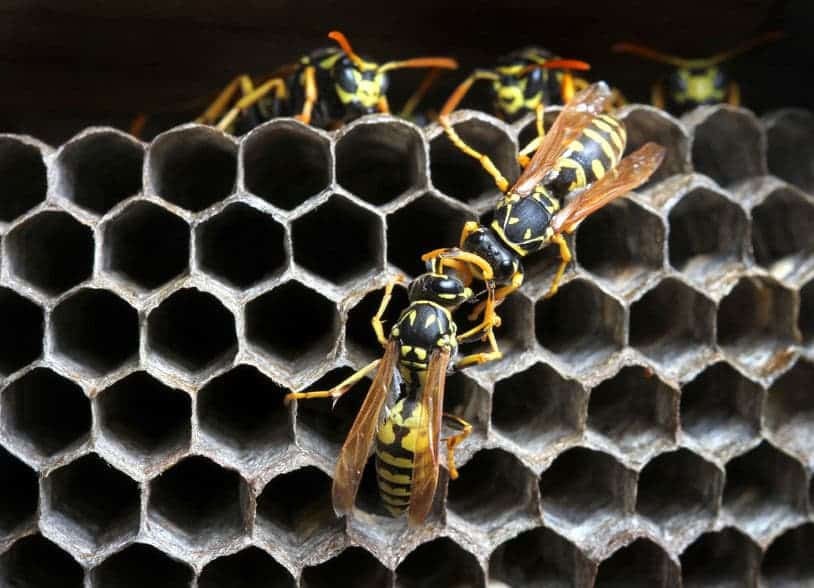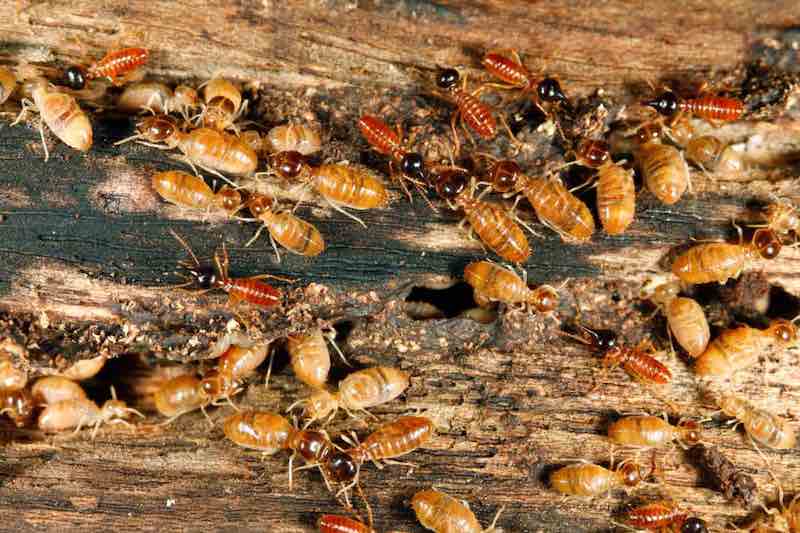
The last guide on pests and pest control Jacksonville residents will ever need.
The sunny summers and mild winters of Florida make it a wonderful climate for residents and tourists alike—and, unfortunately, it’s also ideal for a wide variety of pests that range from annoying to harmful to downright hazardous.
In this Ultimate Guide to Pest Control, we’ll share information about nine different types of pests and the varieties commonly found in our region of Florida, from Jacksonville’s beach communities and the Westside, to St. Johns and St. Augustine. Plus, we’ll share links on how to respond if you need help with residential pest control and eradication.
Ants
There are more than 700 species of ants in the United States alone. Fortunately, not all of them live where we do. Having said that, fire ants and carpenter ants can cause big problems in Florida, damaging homes and stinging people, especially as temperatures heat up and rains are heavier. Plus, some people have allergic reactions to their stings, which can sometimes be life threatening.
Fire Ants
Two types of fire ants exist in Florida, according to the University of Florida’s Institute of Food and Agricultural Sciences. The red imported fire ant is more common, traveling from South America and arriving in the United States in the 1940s. The other type is the native fire ant.
Fire ants live in mounds in lawns, on sidewalk edges, under concrete driveways, in electrical boxes, compost piles, and mulch, among other locations. Mounds are less than 18 inches in size and, when rains are heavy, the colony may head for higher ground, away from the saturated soil—including moving into homes.
This species will aggressively defend its mounds and surrounding areas, working in groups to attack children, pets, gardeners, and so forth if they feel threatened. Plus, unlike other types of pests, individual fire ants can continue to sting people and animals.
Stings can be quite painful, with skin irritations and itching sometimes lasting for days. For relief, you can try hydrocortisone cream, antihistamines, cold compresses, and oatmeal baths.
If someone with an allergy gets stung, the Mayo Clinic shares that there is a risk of anaphylaxis, which can be fatal. Get medical help immediately if someone gets stung and is having, or has had, an allergic reaction.
People sometimes try to get rid of fire ants themselves by pouring boiling water on their mounds or igniting them. Besides not being entirely effective, this can be dangerous. That’s why it’s recommended that you use pest control services for fire ants.
Carpenter Ants
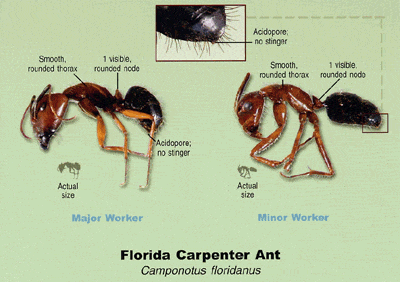
Carpenter ants excavate wood when making room for a nest and, when they dig at the wood in your home in large numbers, the house’s structural soundness can be severely compromised. So, it’s not surprising that carpenter ants have been considered one of the top five in pestiness in the United States.
Inside homes, carpenter ants tend to gravitate to where there’s lots of moisture, including spaces around tubs, sinks, and dishwashers, as well as any place where wood has been impacted by plumbing leaks. Outside, they seek out tree stumps, rotting logs, and dead and even live trees. When humidity rises, you’ll likely see more of them; plus, they favor spots where other pests have already done damage.
If you’ve got an infestation that’s a mature colony, then you may see flying reproductives being attracted to, say, spilled soda or other sugars.
Carpenter ants may be a threat throughout our area, whether you live in a newer community such as Nocatee, or more established neighborhoods or cities such as Ortega or Vilano Beach. To help prevent carpenter ants from becoming a problem for your family, keep branches, limbs, and firewood stacks away from the home. Ensure that utility pipes and cables coming through your walls are well sealed, and fix water leaks promptly. If you need help with an ant infestation and ant control, you can conveniently make a pest control appointment online. Read More: What to Know About Ant Control in Jacksonville
Bed Bugs
Bed bugs are everything you don’t want a pest to be: elusive and hardy, always on the move and able to adapt to a wide variety of human conditions. They’ll ride home with you on your clothing, in used furniture being delivered to your house, and more. They then settle into headboards and baseboards, carpets and nightstands, and cracks and crevices in your home.
One potential source of bed bugs are areas where hotels are clustered and tourism is active, such as parts of Orange Park, Jacksonville Beach, Mandarin, World Golf Village, and Ponte Vedra Beach, for example. Although a hotel may maintain the highest levels of cleanliness, the frequent turnover of guests—who may have just come from another vacation destination where beg bugs are prevalent—increase the opportunities for these pests to spread.
These flat, reddish-brown critters can easily be seen in adult stages when they aren’t hiding, but the first signs of infestations are often small spots on linens and mattresses.
Although bed bugs don’t transmit diseases, they bite—and these bites can cause itchy welts. If you scratch them, they can become infected. So, if you or someone else in your home experiences swollen, red welts that itch, ones often lined up in a row, you may have an infestation of bed bugs. If so, a bed bug treatment is your next step. Read More: Get Rid of Bed Bugs in Your Jacksonville Home
Bees
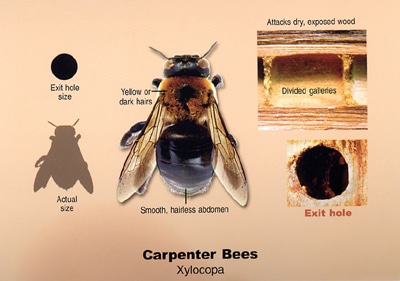
Many varieties of bees provide benefits without posing significant threats, while others are problematic. In Florida, there are several kinds of bees, including honeybees. They are highly beneficial for agriculture and our food supply, with this variety dying after a single sting. Bumble bees, meanwhile, provide valuable pollination but their stings can be severe.
Carpenter bees look remarkably like bumble bees, and they come in a larger size and a smaller one. The larger ones nest in logs, stumps, and dead branches, while you’ll find smaller ones in tunnels excavated in bush stems. As far as stings, they aren’t a big threat, but they can weaken the structural wood of your home.
Then there is the Africanized honey bee, which is an aggressive creature posing a severe risk to people who can’t rapidly get away from them during an attack—such as young children, elderly people, and those with disabilities. To make matters worse, they typically nest near people and it doesn’t take much to agitate them.
Two different types of yellowjackets call Florida home: the eastern and the southern yellowjacket. They eat insects that damage plants, including in landscaping, which is a plus. But, they quickly get agitated, as well, and can repeatedly sting. You often find them near garbage cans and dumpsters, as well as soda cans.
Don’t DIY! Get a free professional pest control inspection. Read More: Guide to Jacksonville Bee & Wasp Control
Beetles
Beetles invade kitchens and pantries, contaminating food in cupboards and on countertops, nibbling their way through food in opened boxes as well as unopened ones. In other words, they are real pests, notorious for doing their damage year round.
Merchant grain beetles, for example, enjoy cake mixes, chocolate, cookies, cereals, and grains and other dried goods. They are narrow and brown, their flat bodies having six saw-like teeth on each side.
Then there are the varied carpet beetles, given their name because they eat natural fibers, including wool. They’ve since expanded what they eat, also feasting on flour, sugar, cornmeal, cereal, nuts, and more. You may find larval skins in your dried foods.
If beetles are contaminating your food, you can make an appointment quickly and easily online.
Cockroaches
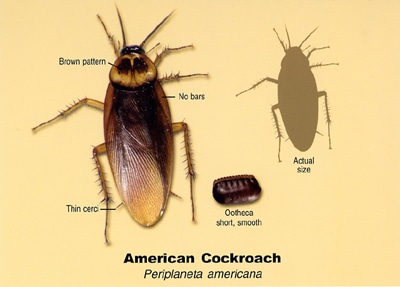
Although there aren’t as many cockroach species as ant species, there are more than enough to go around: 70-plus varieties in the United States. They spread bacteria, including the kinds that cause e. coli and salmonella; contaminate food; aggravate allergies and asthma attacks; and more. When people come in contact with roach droppings or shedded body parts, some of them develop an allergy to the cockroaches themselves.
In Florida, some of the more common varieties are the American cockroach, the German cockroach, the Asian cockroach, and the Smokybrown cockroach. Here’s more information about each of these varieties.
American Cockroach
Another name for this revolting pest is the palmetto bug because palmettos are one of the many places this species likes to inhabit. The American cockroach is one of the largest varieties that infest homes, about three inches in length. Because both males and females have wings that extend beyond their bodies, all of them can glide a short distance. Their bodies are dark brown/reddish, and they have six spined legs, and straight antennae.
Although they’d ideally like to live in leaf litter and mulch piles, they’ll also find openings in your home—through loose weatherstripping, for example, or your attached garage—to help themselves to your food and water. This includes what’s in your pet bowls, plus kitchen crumbs, and water in your kitchens, bathrooms, and laundry rooms.
German Cockroach
This is the most common variety in the United States, with the University of Florida calling the German cockroach the variety of concern, the “species that gives all other cockroaches a bad name.” Why? They’ll travel in groups and settle comfortably in your home. As they travel through the house, the female will lay eggs along the way—which is why one single female can birth a generation that can have tens of thousands of babies in just one year.
These critters are about half an inch in length, light brown or tan with horizontal stripes behind their heads and six spined legs. They’ll enter your home however they can, including in used furniture or appliances, paper bags, cardboard boxes, and more.
Asian Cockroach
To identify pests like the Asian cockroach, think about the German variety, but a stronger flier with longer wings. This species arrived in Florida in the 1980s and they’ve spread throughout the country’s Southeast region. They generally live outdoors, in shaded gardens and piles of mulch. But, they’re also attracted to light, which includes your lightbulbs, computers, television sets, and more.
Smokybrown Cockroach
This variety is also a strong flier, with wings extending beyond their bodies, which are mahogany with shiny black heads and curved antennae. Like other varieties, they have six spined legs.
The Smokybrown cockroach is always looking for water, along with protection from the elements when the weather is warm and moist, like it typically is in Florida. They can be found in the eaves of people’s homes, in tree holes, in garden mulch, and other places where decaying matter can be found and eaten by these pests.
If you’ve got an infestation of one or more types of cockroaches in your home, then DIY solutions typically aren’t effective. This is especially true if you have German cockroaches. Instead, it makes sense to have professional, integrated pest management services to rid yourself of the cockroaches and keep them away. Read More: How to Get Rid of Roaches in Your Jacksonville Home
Fleas
The good news is that fleas have a short lifespan. The problem? During that brief lifetime, a flea can produce 400+ offspring; so, sometimes, you can go from a handful of fleas in your home to thousands in a matter of days. They can jump 150 times their own height to hitch rides on cats, dogs, humans, and more—with just a few bites from these pests making pets and people feel pretty miserable.
The Florida climate is ideal for fleas. Out of the world’s 2,000 varieties of fleas (with more than 300 of them living in North America), you’ll most likely find the domestic cat flea in your house. It’s pretty easy to confuse fleas with bed bugs and vice versa. Fleas are reddish-brown with a long, skinny shape, overall. Bed bugs have a similar color but are flat and shaped like seeds.
Fleas can become a problem anywhere in our area, from urban condos to the rural areas near places such as Middleburg or the Northside of Jacksonville. As with almost all types of Northeast Florida pests, anyone’s home or business can play host to insects such as fleas because our climate is so hospitable to them.
Besides making pets and people miserable, fleas are the most common transmitter of the bubonic plague and they can also pass along tapeworms to pets and humans alike.
If there are fleas in your home, adults will typically be making up less than five percent of their population. Ninety-five percent, meanwhile, will be in the egg, larva, or pupa stage, making it very difficult to remove them from your home. Request a free flea inspection today.
Here’s one more thing to consider. Do you know how fleas often get into structures? On rats and mice. Later, we’ll share info about rodents and hazards associated with them.
Mosquitoes
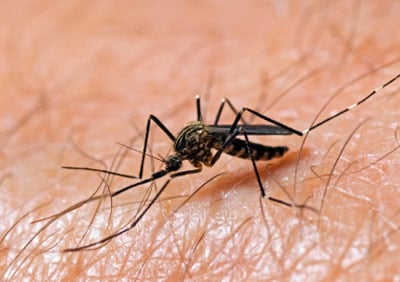
There are more than 80 types of mosquitoes in Florida alone, with many of them carrying dangerous diseases. These diseases include the Zika virus and West Nile virus. Plus, swarms of mosquitoes drive people indoors, preventing you from enjoying Florida’s beautiful weather and ruining outdoor get-togethers.
Part of the problem is that breeding sites for these pests are everywhere because mosquitoes only need a tiny amount of water in which to lay their eggs. So, danger spots range from kiddie pools to bird baths, and from clogged rain gutters to discarded tires. Other problem areas include tree holes, rain barrels, and leaf piles, as well as flower pots, wheelbarrows, watering cans, garbage cans, grill covers, and much more.
Other places where mosquitoes may breed don’t always come easily to mind. These insects may be breeding near your property in ditches and sewage areas, and even in some of our abundant bodies of water, such as the lakes in Keystone Heights or the marshes along the Intracoastal West neighborhoods.
To help prevent mosquito swarms from causing problems for your family, make sure that the items described in the preceding paragraph, along with any other water-catching objects, are drained of any stagnant water and then try to cover them so that more water isn’t collected in them. When it rains, check them again. Also make sure that screens on windows and doors are without holes.
Plus, it makes sense to consider mosquito control services to protect your family, friends, and visitors.
Rodents
One fairly large survey showed that, out of all the potential health-related pest concerns, Americans are most worried about rodents. Rats and mice can carry numerous dangerous diseases, with the ability to directly transmit hantavirus, hemorrhagic fever, leptospirosis, plague, rat-bite fever, and salmonellosis.
Plus, they can indirectly carry diseases such as Colorado tick fever, Lyme disease, several types of typhus, Rocky Mountain spotted fever, and West Nile virus. The latter can happen when the fleas, ticks, and parasites the rodents carry become infected.
Here’s more worrisome news. These diseases can easily be spread through contact with saliva, urine, or feces of these rats and mice—and, to add insult to injury, rodents chew just about anything, including the wiring in your home and cars.
Here are a few types of rodents that are commonly found in Florida infestations.
Deer Mouse
These brown mice with white underbellies nest in tree hollows and log piles, especially in rural areas. They carry hantavirus more often than any other creature, with the disease being transmitted when someone inhales contaminated dust particles, ones that get contaminated with urine, feces, or saliva of infected deer mice.
House Mouse
These mice love to nest in dark, hidden spots within structures, including homes, and are known to spread disease and contaminate food. If you see a dusty gray critter with a light colored belly, that’s almost certainly a house mouse.
Norway Rat
Norway rats bring fleas and mites into homes, carrying plague, jaundice, cowpox virus, salmonella, and other diseases. They can also cause significant property damage as they gnaw through just about anything they can find, including plastic and lead pipes. They make their nests in garbage piles and under concrete slabs, and are generally nocturnal.
Roof Rat
These rats have come from Asia, and can now be found in southern states in the United States, as well as in coastal ones. They spread dangerous diseases, including typhus, jaundice, trichinosis, and more. Roof rats have smooth brown fur that often has spots of black, and they live in colonies that like to nest in trees or the upper portions of houses and other structures.
To help prevent rodents from getting into your home, keep screens in good condition, also placing the screens over vents and chimney openings. Dispose of your garbage frequently and store your food in airtight containers.
Keep the following in good repair: weather stripping and mortar around windows, plus pipes, fixing leaks and removing clogs. Ventilate attics and crawl spaces, keeping them dry.
Place your firewood at least 20 feet away from your house and, before you bring boxes, bags, or packaging into your home, inspect the materials carefully.
If you believe you have a rodent infestation, don’t wait. Contact a rodent control professional.
Termites
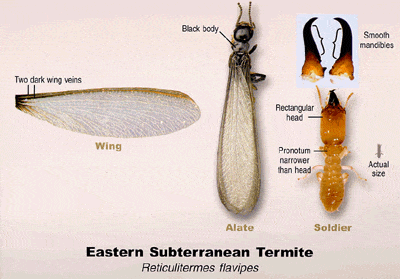
Then there are termites. And, when there are termites, there can be a whole lot of them!
Studies suggest that there are about 2,800 different termite species, with 185 of them considered pests. Certain types go beyond being pesky, being especially destructive. These include the subterranean, drywood, and Formosan termites. Here are specifics about these three hazardous kinds.
Subterranean Termites
You may also hear these called ground termites, and that’s because they’ll tunnel as far as 150 feet beneath the ground to find the wood that serves as their main source of food. This includes home foundations.
One colony of subterranean termites can literally have a million members, and it would take 15 pounds of wood weekly to feed that colony. This voracious need for wood demonstrates why 95 percent of termite damage in North America is caused by this species as they destroy foundations, support beams, insulation, and much more.
Subterranean termites are found more often in warmer climates and, when winter hits, they’ll dig more deeply to stay warm. Or, in more temperate climates, such as in northeast Florida, they’ll just settle in and enjoy the nest they’ve made in places like home foundations.
Drywood Termites
This species is found in southeastern parts of the country, such as Florida, and in southern California. They also eat wood, but above ground. So, their meals of choice would include attics, door frames, window frames, and so forth. Damage can be insidious because the wood may be eaten and crumbling from the inside out.
Formosan Termites
These termites can be exceptionally destructive, and it’s believed that they got into the United States through port cities. Then, they continued to spread through infested railroad ties. Formosan termites really love wood, from boats to trees—and from railroad ties and much more.
We’ve also seen how Formosan termites can threaten some of our most important structures, such as some historic buildings and trees in the Riverside/Avondale neighborhood in Jacksonville, which needed extensive termite treatment in order to save them.
Signs of a termite infestation, overall, include shed wings, looking like tiny fish scales; small droppings piles, with the feces small with ridges, and wood colored; mud-like tunnels coming up from the ground, especially ones that reappear if you destroy them; swollen walls, ceilings, or floors that may have a moldy smell; and holes in wood, whether in your home’s structure or your furniture, especially holes with soil at the edges.
Plus, if you see swarms of insects by your light fixtures, these may be alates. These are termites in the reproductive life cycle stage, and termite swarms suggests there may be a large colony close by.
If you suspect that you have a termite infestation, it’s important to have your home treated everywhere that termites can enter your house and cause damage. This includes around plumbing, by room additions and above-slab patios, and so forth.
Here’s more information about termite control.
Turner Pest Control Services
When you need pest control in Jacksonville here are several reasons why it makes sense to contact us:
- We’ve got decades of experience in making our customers’ lives and communities better, forming in 1971.
- We’re one of the fastest-growing companies in Florida.
- We’re included in the list of top 100 pest control companies in the United States.
- We have QualityPro certification, something fewer than three percent of pest control providers in our country have obtained.
- If you’re ever dissatisfied, we return at no charge until you are happy with our service.
You can also count on:
- Prompt, courteous service
- 24-hour response time
- Appointment times you can depend on
- Affordable programs to fit your budget
- Eco-friendly products
- Professional, trained technicians who pass stringent background checks
- Never having contract cancellation fees
We proudly serve customers in cities and neighborhoods throughout Northeast Florida, including San Marco, Baymeadows, Arlington, Fruit Cove, Springfield, and many more. If you have a home or business in the area, please don’t hesitate to get in touch for a free, no-obligation estimate on any of our pest control services.

